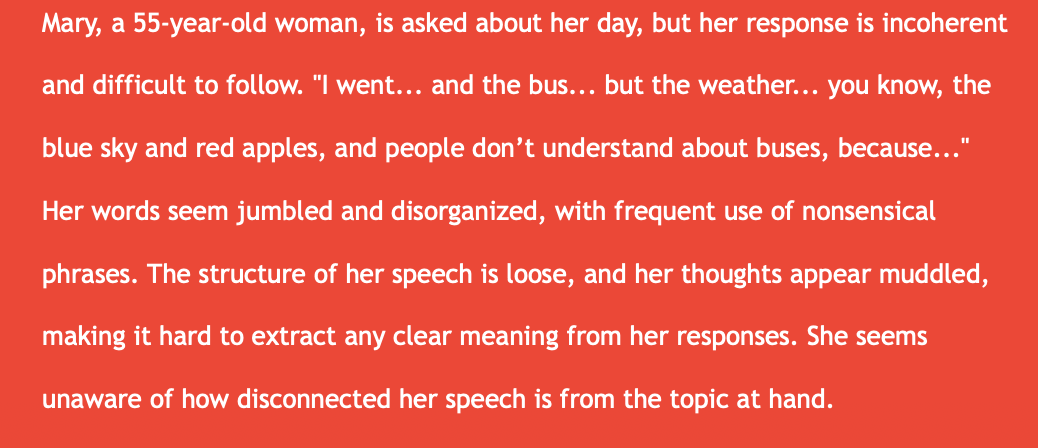7.1 psychopathology of thought
1/21
Earn XP
Description and Tags
7.1 psychopathology of thought
Name | Mastery | Learn | Test | Matching | Spaced |
|---|
No study sessions yet.
22 Terms
Non-delusional abnormal thought content
Suicidal thoughts
Homicidal thoughts
Culturally deviant ideas
Suicidal thoughts
broad term used to describe a range of contemplations, wishes, & preoccupations with death & suicide
varies in intensity, duration, & character
encompasses everything from fleeting wishes of falling asleep & never awakening to intensely disturbing preoccupations with self-annihilation fueled by delusions.
magnitude & characteristics fluctuate dramatically
Not everyone who experiences a suicidal thought attempts suicide → presence of suicidal thoughts
increases the risk of suicide
suicide risk assessment
suicide risk assessment most common cause
mood disorder
persons with personality and substance abuse disorders.
in states of intoxication
general medical illness associated with chronic dysfunction or pain.
Homicidal thoughts
pattern of thoughts about homicide of one or more persons
may range from vague ideas to detailed or fully formulated plans without taking action (“I Feel like killing someone“)
Do not always translate into murder
Assessment & detection of risk
common in drug use: alcoholics, psychotic & traumatic brain injury, or antisocial personality disorder
Culturally deviant ideas
Appear deviant
not a psychopathology → are culturally consistent.
Behaviours understood as unusual, but not as illness by their respective cultures.
Whether the behaviour represents illness is based on the form of the ideas or emotions that elicit the behaviour.
Example of Culturally deviant ideas

DISORDERS OF THE
FORM OF THOUGHT
How the patient is thinking, how thoughts are linked together
types of DISORDERS OF THE
FORM OF THOUGHT
Transitory thinking
Drivelling thinking
Desultory thinking
Formal thought disorder’
disorders of conceptual or abstract thinking,
schizophrenia & organic brain disorders
Formal thought disorder in schizophrenia
coexist with deficits in cognition
difficult to distinguish
5 features of formal thought disorder could be identified:
derailment (slides on to a subsidiary)
substitution (of major thought)
omission (senseless)
fusion (heterogenous elements are interwoven)
drivelling (disordered intermixture of constituent parts of one complex thought).
three features of healthy thinking
constancy
organisation
continuity
constancy
completed thought that does not change in content
organisation
contents of thought are related to each other
continuity
continuity of the sense continuum
3 different disorders of thinking corresponding to features of normal/non-disordered thinking:
Transitory thinking (instead of constancy)
Drivelling thinking (instead of organization)
Desultory thinking (instead of continuity)
Transitory thinking (instead of constancy)
Peculiar transitoriness of thinking characterised by:
derailments
substitutions
omissions
Intention itself is interrupted & there is a gap.
Both the grammatical & syntactical structures are disturbed.
example of Transitory thinking (instead of constancy)

Drivelling thinking (instead of organization):
preliminary outline of a complicated thought with all its necessary particulars, but loses preliminary organisation of the thought
critical attitude towards their thoughts
not organised & inner material relationships between them become obscured and change
example of Drivelling thinking (instead of organization):

Desultory thinking (instead of continuity):
Sudden appearance of simple ideas not related to the rest of the ideas or the external situation
sudden ideas force their way in from time to time (continuity is loosened)
Ex.: “My actual problem is that the people never understand me, & my stomach feels like an empty
bucket
example of Desultory thinking (instead of continuity):
